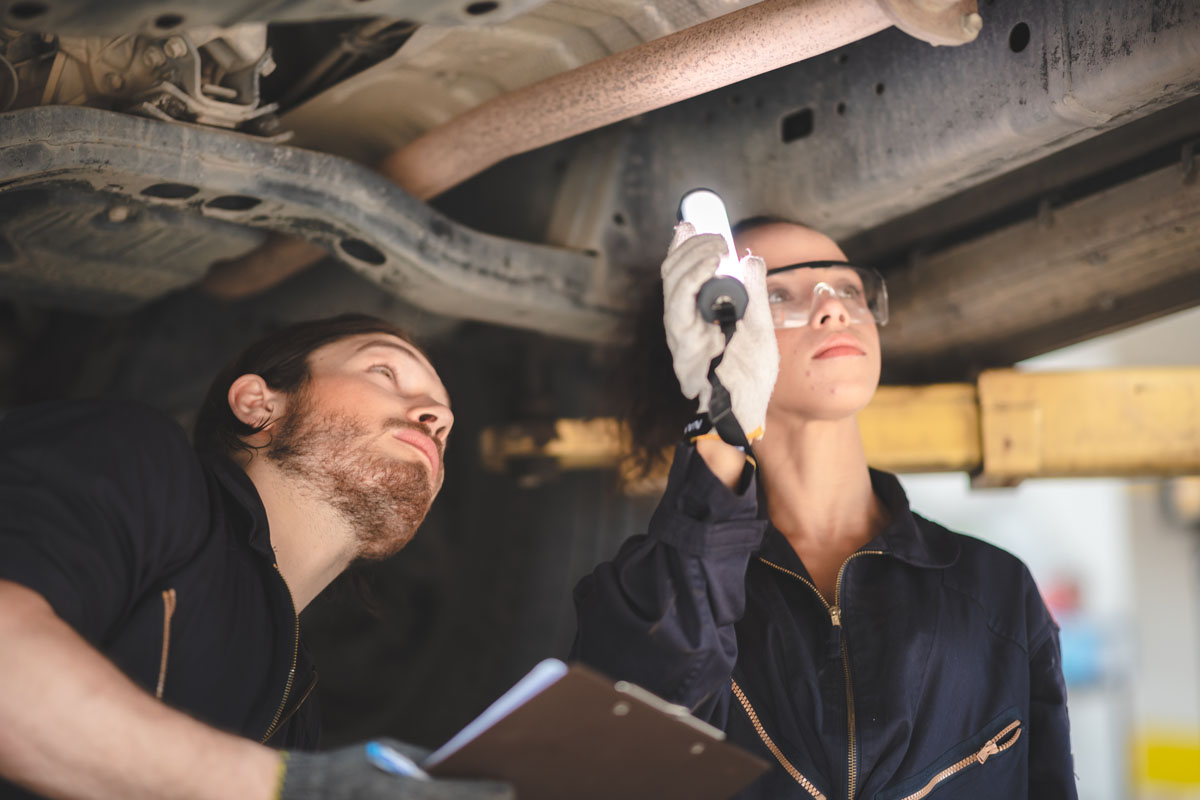
You’re entering hour seven of that twelve-hour excursion down the coast, cruising down the highway, without a care in the world, and then, out of the blue, your car starts shaking. Without warning, your arrival time is in serious danger.
What is checked during a vehicle safety inspection?
Obviously, this is a made-up tale, since, like any responsible car owner, you regularly take your car in for an inspection. However, what is checked throughout a vehicle safety inspection? This inspection encompasses all the features of your car that make it safe for driving on the road. This means examining your tires, brakes, mirrors, lights, and other things your vehicle requires to function properly to keep you and other drivers safe. Therefore, unless you want to find out what to do when your car breaks down, this post will go into the subtleties of passing a vehicle safety inspection.
What is a vehicle safety inspection?
It differs subject to what state you are located in, but overall, a vehicle safety inspection is a government inspection that guarantees vehicles are safe to be driven on the road. Many states require this inspection each year, whereas others only require it prior to the sale of a vehicle, so always make sure to acquaint yourself with your state’s vehicle inspection ordinances. A lot of states also require an emissions test with these inspections to verify your vehicle is current with present EPA emissions standards.
What entails a vehicle safety inspection?
These inspections are carried out by licensed vehicle technicians at any of your state’s MVD locations. They will run your car through a checklist of features that are required to function properly to be deemed safe. That comprises of visibility components such as your lights, mirrors and horn, the vehicles steering and brake system, seat belts, and the vehicles tires. They are going to check for any clear hazards such as fuel leaks too, the existence of which can be a reason for failing the inspection.
The following is a list of what’s examined throughout an inspection:
Tires
Tires are examined to establish if the tread has been worn down or if any dangerous imperfections are known like dry rot, bubbles, or other damage. The technician is going to also check your spare tire to guarantee it is road-ready should you ever require it.
Brakes
Functioning brakes are one of the most basic car inspection requirements. The technician is going to check and determine if your rotors and brake pads are overly worn and if there are any brake fluid leaks. Your emergency brake (or parking brake) is also going to be checked. Should your brakes feel “spongy” or otherwise slow to brake properly, you should think about having them examined or you may fail the inspection.
Lights
The ability to see and be seen when driving is vital to operating your vehicle safely. Each vehicle safety inspection is going to include an examination of your lights, including headlights, hazard lights, taillights, license plate lights, turn indicators, and brake lights. All of these lights are required to function correctly without being too dull.
Windshield
Inspections usually include a windshield evaluation that guarantees your view isn’t blocked and looks for any cracks, chips, or loosened seals that might lead to larger issues down the road.
Windshield Wipers
Your windshield wipers are also going to be examined along with your windshield to guarantee they are not streaking or in other respects failing to keep the windshield unobstructed. Don’t forget that your vehicle does require windshield wipers for passing inspection.
Mirrors
Without your rear and side view mirrors, you’re basically driving your vehicle with one hundred and eighty degrees of blindness. If you can’t see what’s approaching behind you, you’ll have no clue when it’s safe to change lanes or get out of danger’s way, if and when it’s required. Each of your side view mirrors and your rearview mirror are required to be accounted for and unbroken for passing inspection.
Seat belts
The vehicles seat belt’s capability to auto-lock and retract is going to be checked throughout the inspection to guarantee your seat belts are functioning correctly and safely.
Steering and alignment
Your components of your steering system are going to all be examined throughout the inspection to guarantee that nothing is loosened or at risk of failing. Any occurrence of steering failure throughout a turn could be catastrophic, so any worn parts discovered throughout the inspection might result in failure of the inspection.
Suspension
Your suspension is what provides you with a pleasant ride as your vehicle navigates the bumpy, rough roads of the US. The technician is going to examine to be sure none of your shocks are leaking or damaged in other respects.
Inspect your car regularly
With so many possible problems, it’s always a good idea to take your vehicle in routinely for inspection, even when your state doesn’t require it. There are national vehicle care months in April and October for bringing extra attention to the importance of these safety inspections, so take advantage of these chances to get your inspection carried out. April is a perfect time to take care of any damage or wear your vehicle took on throughout the winter months and get ready for summer adventure, whereas October is a perfect time to be sure you’re prepared for the coming colder months.
Rov-N-Techs In Scottsdale, Arizona
Rov-N-Techs performs all factory recommended services on Land Rovers & Jaguars at affordable prices! Master Technicians, Joe Caraway and Kevin Curtis worked at Land Rover of North Scottsdale for 10 years before opening their own shop in 2006 under the name of “Rover Techs”. Now known as “Rov-N-Techs” Joe and Kevin offer over 35 years of combined Land Rover experience. Contact us today!